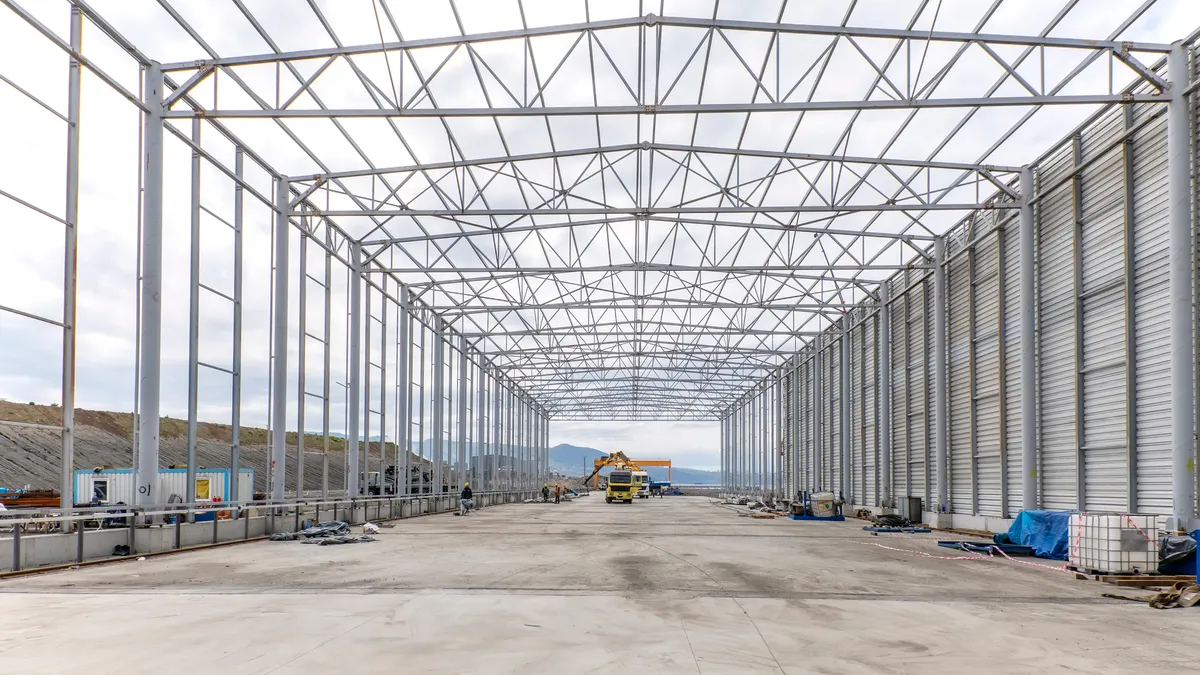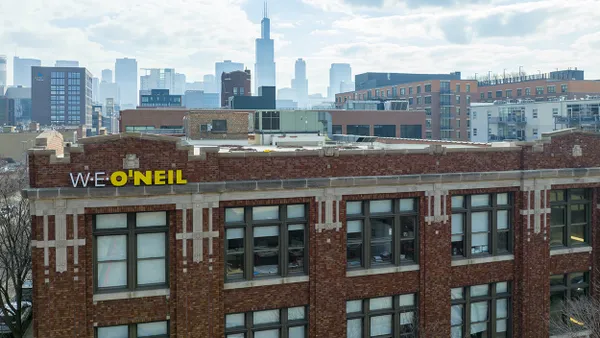Dive Brief:
- The Minneapolis branch of the Federal Reserve has picked up on what contractors have been putting down for months: Higher interest rates are strangling commercial construction deals, even as infrastructure projects boom.
- In a survey of the six-state region of the upper Midwest, the bank found that a higher interest rate environment is negatively impacting residential and commercial construction, while infrastructure and industrial projects continue to thrive.
- Compared with a year ago, revenue fell for 61% of residential builders and 41% of the commercial contractors in the survey. But just a third of infrastructure and industrial contractors saw a contraction. That kind of private market pain could bolster arguments for rate cuts as soon as early 2024.
Dive Insight:
The Minneapolis branch reported the survey results ahead of the Federal Open Market Committee meeting on Tuesday and Wednesday, when policymakers are largely expected to leave interest rates alone.
For months, contractors have observed a bifurcated construction market, one in which public funding and tax credits stoke infrastructure and manufacturing projects, while private developments that rely on commercially financed capital have stalled or even been canceled.
But the Minneapolis Fed’s survey, which polled more than 300 respondents engaged in residential, commercial, industrial and infrastructure construction, provides more insight to what builders are experiencing on the frontlines, a key signpost for officials who determine monetary policy.
For example, a concrete subcontractor in the Greater Minnesota market told the bank, “there has been a real drop off in single-family homes,” with high interest rates making houses less affordable. But the sub also said he expected more work outside of housing, because federal and state governments are “dumping a lot of money” into public projects.
While market watchers agree the Fed will likely leave rates unchanged when it meets this week, a growing number of observers now say if conditions continue on their current trajectory, interest rate cuts could come as early as the first quarter of next year.
A case for lower rates
The Minneapolis Fed’s survey could provide support for doing so. It found that the residential sector began to diverge from the rest of the market around mid-2022, as interest rates climbed, with the commercial sector soon following.
Government infusions of money in industry and infrastructure projects, on the other hand, were the only thing keeping some respondents busy. For example, a Twin Cities architect told the bank it would likely be considering layoffs if not for government contracts, but a home builder in Montana said it had completely run out of backlog. Previously, the builder said, it would have already booked 20% of next year’s sales.
If that type of slowdown spreads to other sectors, it could endanger the “soft landing” the Fed has sought in its battle to quash inflation, without tripping the broader economy into a full-blown recession. Indeed, softness in commercial construction dragged overall planning for new projects down in a broader report last week.
Still, other signs within the construction industry provide fodder for an extended period of higher interest rates to remain. Friday’s jobs report came in stronger than expected, as an unusually resilient labor market continues to add workers, even in the face of higher borrowing costs.
While the broader employment market added about 20,000 more jobs than expected — pushing the overall unemployment rate down from 3.9% to 3.7% — construction has now added 10 times as many positions in the last year. There were 200,000 more construction jobs on Friday than at the same point in 2022.
“While construction added only 2,000 jobs for the month, the industry has added jobs at a significantly faster pace than the broader economy over the past year,” said Anirban Basu, chief economist for Associated Builders and Contractors. “That’s especially true for the nonresidential sector, in which employment has increased by an impressive 3.2% over the past year. That momentum is largely attributable to megaprojects in the manufacturing sector.”













